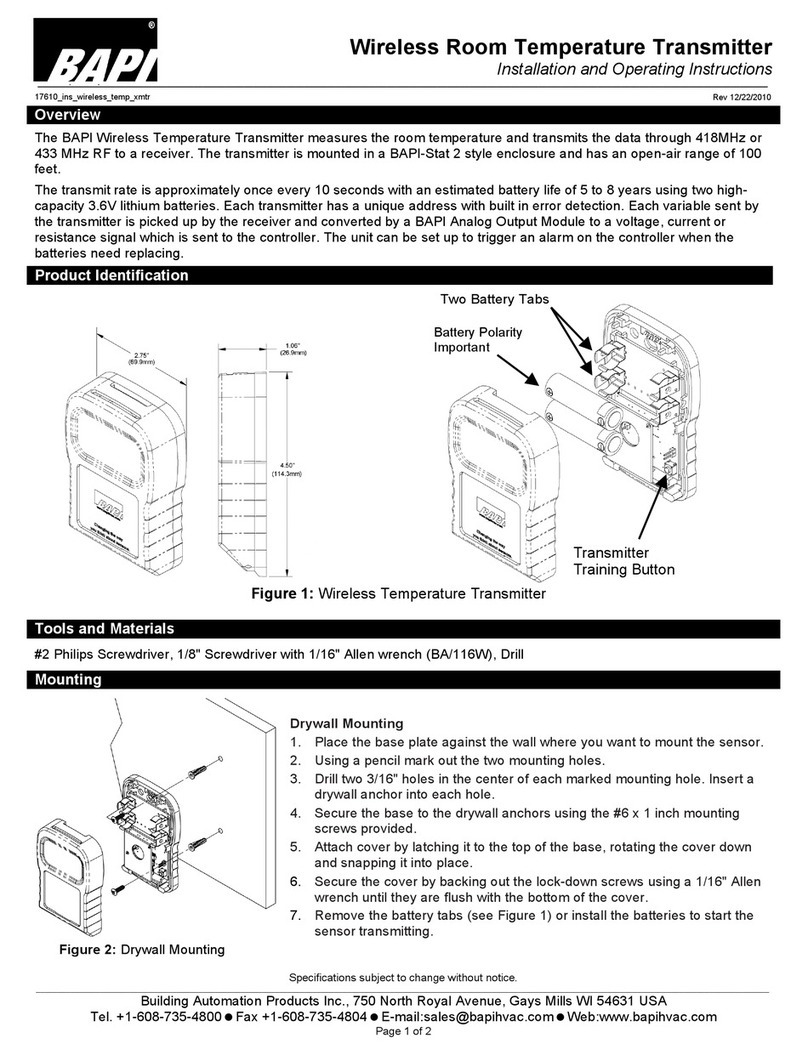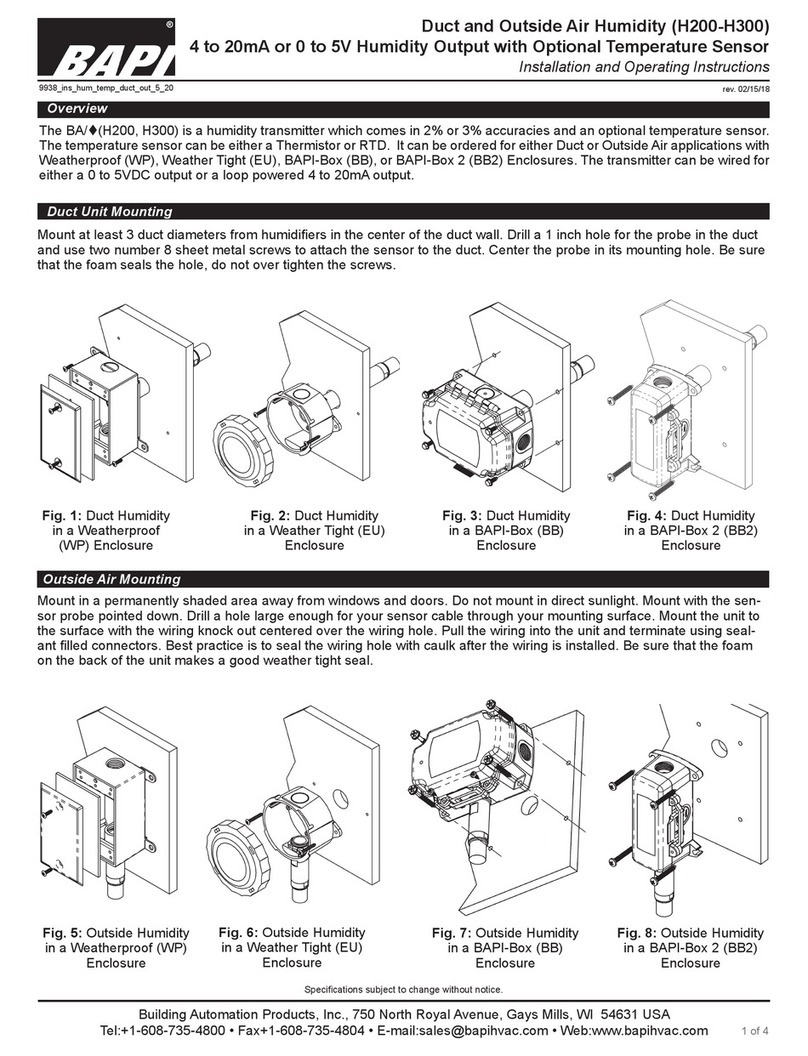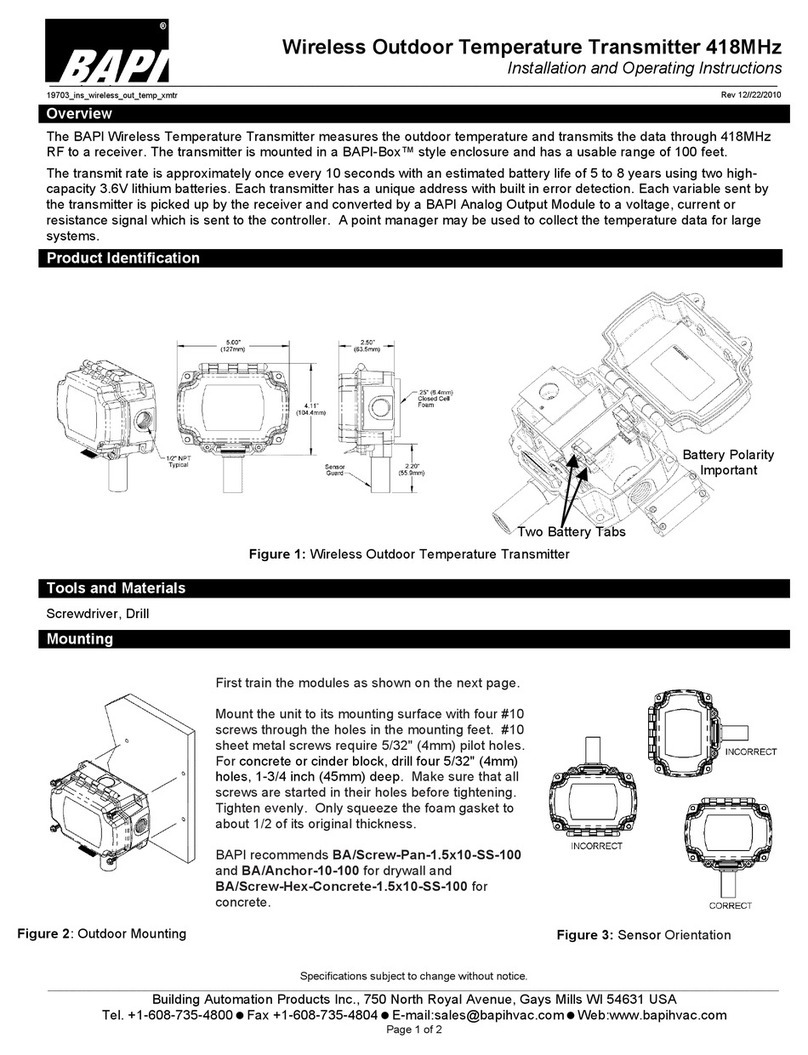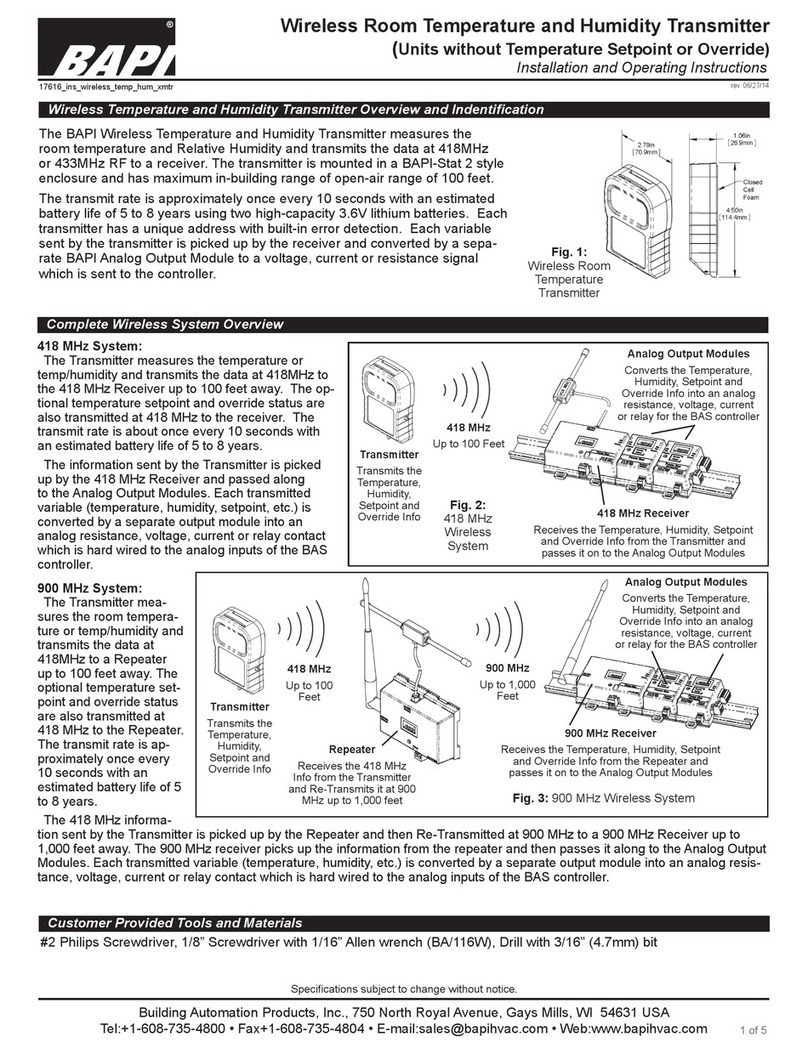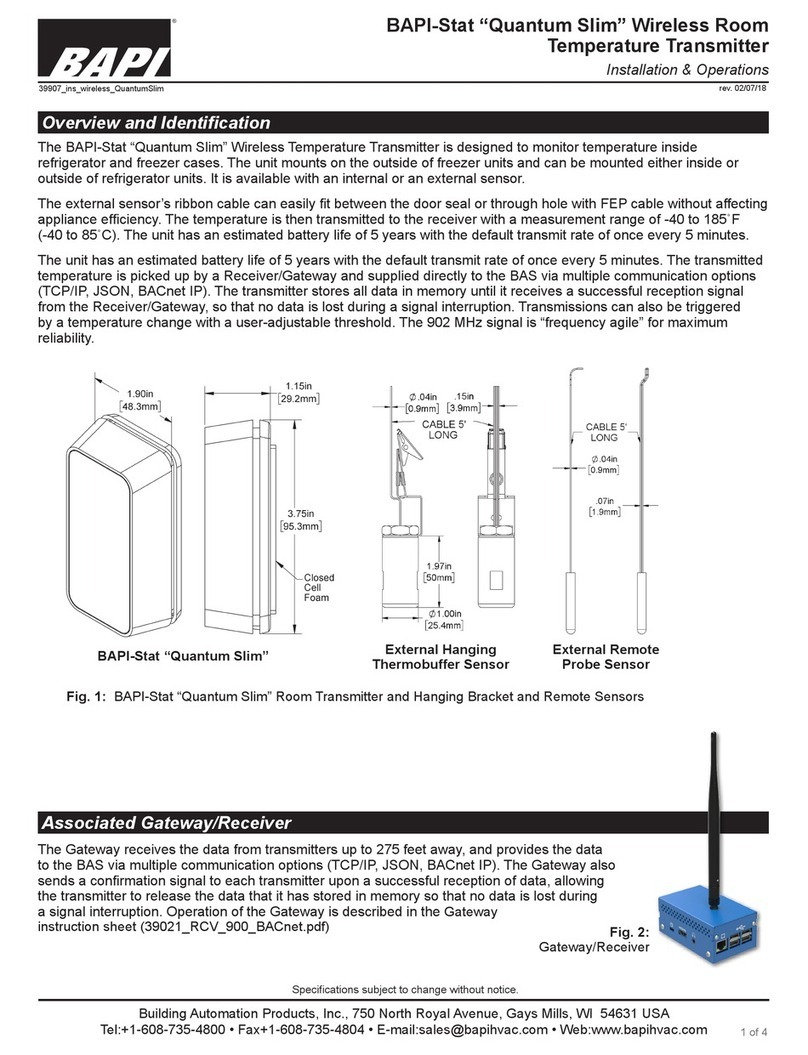
Installation and Operating Instructions
Delta Style Room Humidity Transmitter with Optional Temp. Sensor
BA/#-Hxxx-R
Building Automation Products, Inc., 750 North Royal Avenue, Gays Mills, WI 54631 USA
T
el:+1-608-735-4800 • Fax+1-608-735-4804 • E-mail:
[email protected] • Web:www
.bapihvac.com
Specications subject to change without notice.
27417_ins_Delta_RH
3 of 4
rev. 04/15/14
10 Second Toggle Humidity Display Only
Temp. Display Only
J2 Jumper “On”
Degrees = °F
°F or °C Indication (for display units only)
The jumper on J2 determines whether the unit will
display in Fahrenheit or Celcius. With the jumper
“On”, the unit displays in Fahrenheit which is the
factory default. (See diagrams at right.)
J2 Jumper “Off”
Degrees = °C
Humidity Reading Offset (for display units only)
The Humidity reading can be offset by ±5% by turning
POT R20. (See diagram at right.)
Zero Humidity Offset (centered) is the factory
default. Turning clockwise increases the Humidity
Offset by up to +5%. Turning counterclockwise
decreases the Humidity Offset by up to -5%.
Unit Interval Toggle Rate Between Display of Temperature and Humidity (for display units only)
POT R6 sets the approximate toggle rate between
temperature and humidity display of 3 to 15 seconds. POT
R6 can also be used to set a constant display of either
temperature or humidity. (See diagram at right.)
Specications
Power: Reverse polarity protected.
4 to 20 mA Output ........ 10 to 35 VDC, 22mA max
0 to 5 VDC Output ........ 10 to 35 VDC, 22mA max
12 to 24 VAC, 0.53VA max
0 to 10 VDC Output) ..... 15 to 40 VDC, 6mA max
15 to 28 VAC, 0.14VA max
Note: half wave DC power is recommended. If AC power is
used, it must be shielded from the signal wiring.
Sensor:
Humidity ............. Capacitive w/ temperature compensation
& digital output.
%RH resolution is 8 bit
Optional Temp. ... Passive Thermistor, RTD or
Semiconductor with bias of 5 to 30VDC
Filter: None
RH Accuracy: RH Sensor chip
200 ±2%, from 20% to 80%RH @77ºF
200 ±3%, from <20% to >80%RH @77ºF
300 ±3%, from 0% to 100%RH @77ºF
Resolution RH sensor 0.4%
Temp Display Accuracy: Temperature Chip only
Temperature ±0.6˚C @25˚C
Resolution Temp sensor 0.2˚
Optional Temp Sensor Accuracy: Passive 2 wire only
Thermistor* ......... (std) ±0.36ºF, (±0.2ºC)
(High) ±0.18ºF, (±0.1ºC), [XP] option
RTD ................... Platinum (PT), 3.85Ω/ºC for 1KΩ RTD
Platinum (PT), 0.385Ω/ºC for 100Ω RTD
Nickel (Ni), 2.95Ω/ºF for the JCI RTD
Solid State .......... AD592, bias 5-30VDC
Output: Updated every 2 seconds
RH (0 to 100%) 4 to 20mA, 0 to 5VDC or 0 to 10VDC
Temperature Passive Resistance or Semiconductor
Impedance:
Current 700Ω @ 24VDC minimum
Voltage 10KΩ maximum
Terminals: Cage clamp, 16 to 22 AWG
Wiring: 2 to 6 pair depending on options
Mounting:
Standard 2”x4” J-box or drywall, screws provided
Field Humidity Calibration Offset: (Factory calibrated)
%RH Adj. Potentiometer, ±5%
Enclosure Material: ABS Plastic, UL94V-HB
Optional Display: 3.5 digit LCD
Dimensions ......... 0.5”H x 1.1”W, Digits .4”H
(13.34 x 29.21mm), (Digits 10.29mm H)
Range ................ 0 to 100%, -58 to 199.5˚F (-50 to 150˚C),
factory set
Span ................... 0 to 100%, 32 to 122˚F (0 to 50˚C), factory set
Resolution .......... 0.5%RH or 0.5˚F or °C
Units ................... ˚F or ˚C, Board jumper (J2)
Update ................ Every 2 seconds, factory set
Alternating .......... Temp/RH, adjustable 3-15 seconds or xed
temperature or humidity
Power up ............ 0% RH & 0.0˚ at power up for OK
Then reads value after 2 seconds
Fault ...................
RH 100% or Temp 0% for sensor fault after 500 sec.
Optional Comm. Jack:
-C35 3.5mm Phono jack
Optional Test & Balance Switch:
-TB 3 position switch High/Normal/Low
Passive temp sensor output only
Environmental Ambient Range:
Temp 32º to 122ºF, (0º to 50ºC)
Humidity 5% to 95% RH (Non-Condensing)
Agency: RoHS, UL94V-HB,
CE* (EN50081-1:1998, EN61000-6-2)
*All passive thermistors 10KΩ and smaller
are CE Compliant






